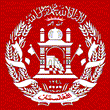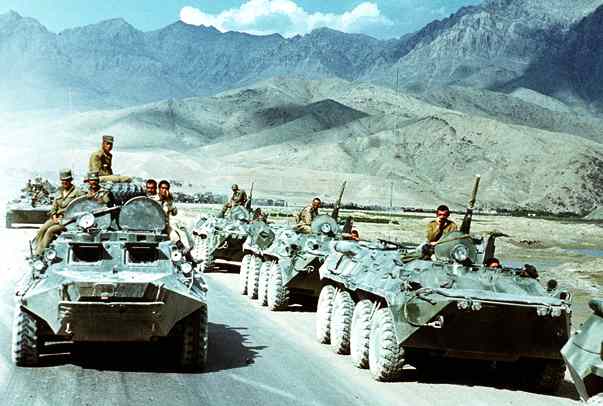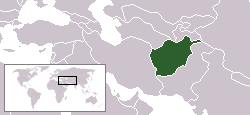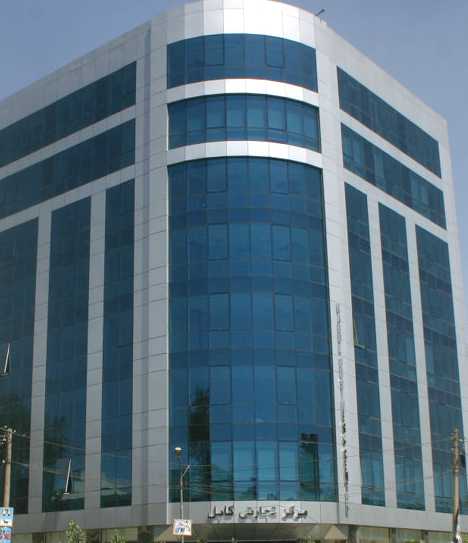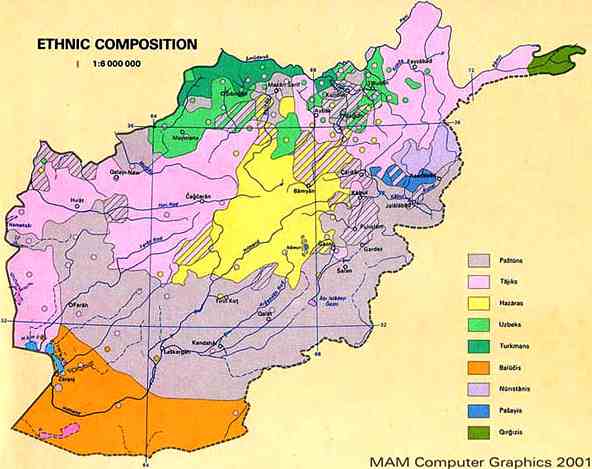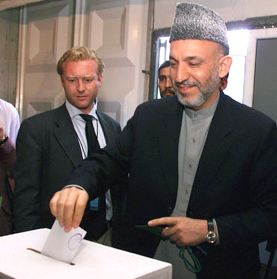|
AFGHANISTAN
|
|||
|
HOME | BIOLOGY | FILMS | GEOGRAPHY | HISTORY | INDEX | INVESTORS | MUSIC | SOLAR BOATS | SPORT |
|||
|
Afghānistān, officially the Islamic Republic of Afghanistan (Pashto: د افغانستان اسلامي جمهوریت, Persian: جمهوری اسلامی افغانستان,Turkish:Afganistan), is a landlocked country at the crossroads of Asia and the Middle East. Generally considered a part of Central Asia, it is sometimes ascribed to a regional bloc in either South Asia or even perhaps the Middle East as it has cultural, ethno-linguistic, and geographic links with most of its neighbours. It is largely bordered by Pakistan in the south and east, Iran in the west, Turkmenistan, Uzbekistan and Tajikistan in the north, and the People's Republic of China in the far east. The name Afghanistan means "Land of the Afghans".
Afghanistan is a mosaic of ethnic groups and cultures, and a crossroads between east and west. An ancient land that has often been plundered and also a focal point of trade. The region of present-day Afghanistan has seen many invading forces come and go, including Persians, Greeks, Arabs, Turks, Mongols, British and Soviets. Afghanistan was created in 1747 as a large empire, its modern-day shape was recognized by the international community as a fully independent state in 1919, when foreign intervention ceased following the Anglo-Afghan wars. Since 1979, the country has suffered almost continous conflict, beginning with the Soviet invasion followed by civil war and finally by the 2001 US war on terror, in which the ruling Taliban regime was toppled. In December 2001, the United Nations Security Council authorized the creation of an International Security Assistance Force. This force, composed of US and NATO troops is assisting the government of President Hamid Karzai in establishing authority across the country.
Name
The name Afghānistān literally translates to Land of the Afghans. Its modern usage derives from the word Afghan. The Pashtuns began using the term Afghan as a name for themselves from the Islamic period onwards. According to W.K. Frazier Tyler, M.C. Gillet and several other scholars, "The word Afghan first appears in history in the Hudud-al-Alam in 982 AD." The last part of the name Afghānistān (-istān) originates from the Persian word stān (country or land). The English word Afghanland that appeared in various treaties between Qajar Dynasty and the United Kingdom dealing with the lands between Iran and British Raj inhabited by Pashtun tribes (modern Southeastern Afghanistan) was adopted by Afghan officials and became Afghanistan.
However, Afghanistan was pronounced by its current name in 18th century when Ahmad Shah Durrani formed the new government based on Pashtun rule, and was officially named as Afghanistan during the ruling of Abdur Rahman Khan. Before the 18th century, the region of present-day Afghanistan was known as a province of Greater Iran called Khorasan.
Soviet troops withdrawing from Afghanistan in 1988
The Encyclopaedia of Islam states:
Afghānistān has borne that name only since the middle of the 18th century, when the supremacy of the Afghan race (Pashtuns) became assured: previously various districts bore distinct apellations, but the country was not a definite political unit, and its component parts were not bound together by any identity of race or language. The earlier meaning of the word was simply “the land of the Afghans”, a limited territory which did not include many parts of the present state but did comprise large districts now either independent or within the boundary of Pakistan. History
Excavation of prehistoric sites suggests that early humans lived in Afghanistan at least 50,000 years ago, and that farming communities in Afghanistan were among the earliest in the world.
Afghanistan exists at a unique nexus point where numerous Eurasian civilizations have interacted and often fought, and was an important site of early historical activity. Through the ages, the Hindu Kush has been home to the Aryans (Indo-Europeans: Indo-Aryans, Persians, Medes, Parthians, etc.). It also has been invaded by a host of people, including the Greeks, Mauryans, Kushans, Hepthalites, Arabs, Mongols, Turks, British, Soviets, and most recently by the Americans. On other occasions, native Afghan entities have invaded surrounding regions to form empires of their own.
Between 2000 and 1200 BC, waves of Indo-European-speaking Aryans are thought to have flooded into this part of Asia which now consists of modern-day Afghanistan, Iran, Turkmenistan, Uzbekistan,Tajikistan, Pakistan and others, setting up a nation that during the rule of Medes and the Persian Empire became known as Aryānām Xšaθra or Airyānem Vāejah. Later, during the rule of Ashkanian, Sasanian and after, it was called Erānshahr ايرانشهر (Irānshæhr) meaning "Dominion of the Aryans", which included large parts of Mesopotamia, the Caucasus, Armenia, Azerbaijan, Iran and modern-day Central Asia (Afghanistan, Turkmenistan, Uzbekistan, Tajikistan, the western part of Pakistan, etc.).
Afghanistan
world location map
Geography
Afghanistan is a land-locked, mountainous, central Asian country, with plains in the north and southwest. The highest point, at 7485 m (24,557 ft) above sea level, is Nowshak. Large parts of the country are dry, and fresh water supplies are limited. Afghanistan has a continental climate, with hot summers and cold winters. The country is frequently subject to earthquakes.
At 249,984 mi² (647,500 km²), Afghanistan is the world's 41st-largest country (after Burma). It is comparable in size to Somalia, and is somewhat smaller than the US state of Texas.
The country's natural resources include copper, zinc and iron ore in central areas; precious and semi-precious stones such as lapis, emerald and azure in the north-east and east; and potentially significant oil and gas reserves in the north. However, these significant mineral and energy resources remain largely untapped due to the effects of the Soviet invasion and the subsequent civil war.
Business Center in Kabul
Economy
Afghanistan is an extremely impoverished country, one of the world's poorest and least developed nations. Two-thirds of the population lives on less than US$2 a day. The economy has suffered greatly from the recent political and military unrest since the 1979-80 Soviet invasion and subsequent conflicts, while severe drought added to the nation's difficulties in 1998-2001.
The economically active population in 2002 was about 11 million (out of a total of an estimated 29 million). While there are no official unemployment rate estimates available, it is evident that it is high. The number of non-skilled young people is estimated at 3 million, which is likely to increase by some 300,000 per annum.
As much as one-third of Afghanistan's GDP comes from growing poppy and illicit drugs including opium and its two derivatives, morphine and heroin, as well as hashish production.
On a positive note, international efforts to rebuild Afghanistan led to the formation of the Afghan Interim Authority (AIA) as a result of the December 2001 Bonn Agreement, and later addressed at the Tokyo Donors Conference for Afghan Reconstruction in January 2002, where $4.5 billion was committed in a trust fund to be administered by the World Bank Group. Priority areas for reconstruction include the rebuilding of the educational system, health, and sanitation facilities, enhancement of administrative capacity, the development of the agricultural sector, and the rebuilding of road, energy, and telecommunication links.
Map
showing distribution of ethnic groups in Afghanistan
DemographicsThe population of Afghanistan is divided into a wide variety of ethnic groups. Because a systematic census has not been held in the country in decades, exact figures about the size and composition of the various ethnic groups are not available. Therefore most figures are approximations only. According to the CIA World Factbook, an approximate ethnic group distribution is as follows:
Languages
The CIA factbook on languages spoken in Afghanistan is as follows: Pashto 35% (in gray) and Persian (Dari) 50% (in pink), both Indo-European languages from the Iranian languages sub-family. Others include Turkic languages (primarily Uzbek and Turkmen) 9% (in green), as well as 30 minor languages 4% (primarily Balochi (in orange) and Pashai (in blue) and Nuristasni (in purple). Bilingualism is common.
Religions
Religiously, Afghans are over 99% Muslim (approximately 80% Sunni and 19% Shi'a). Other religions in Afghanistan include Zoroastrianism, Sikhism, and Hinduism. Afghanistan was once home to an ancient Jewish community, numbering approximately 5,000 in 1948. Most Jewish families fled the country after the 1979 Soviet invasion, and only one individual, Zablon Simintov, remains today. With the fall of the Taliban, a number of Sikhs have returned to the Ghazni, Nangarhar, Kandahar and Kabul provinces of Afghanistan.
Largest cities
The only city in Afghanistan with over one million residents is its capital, Kabul. The other major cities in the country are, in order of population size, Kandahar, Herat, Mazar-e Sharif, Jalalabad, and Kunduz.
President Hamid Karzai casting his vote at the 2004 Presidential elections
LINKS
and REFERENCE
A taste for adventure capitalists
Solar Cola - a healthier alternative
|
|||
|
This
website
is Copyright © 1999 & 2006 NJK.
The bird |
|||
|
AUTOMOTIVE | BLUEBIRD | ELECTRIC CARS | ELECTRIC CYCLES | SOLAR CARS |
